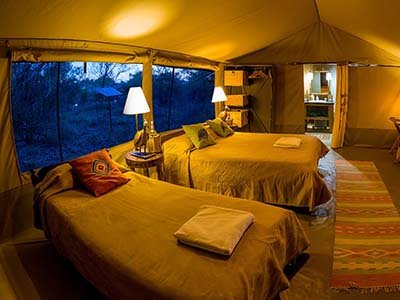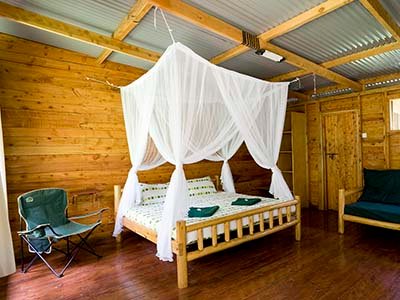Rubondo Island National Park
Rubondo Island National Park was created in 1977. Together with the Burigi Game Reserve and Biharamulo Game Reserve, the park is the most important conservation unit on Lake Victoria, the world’s third-largest freshwater lake. It spans 30 kilometres from north to south and encompasses 456 km2 (240 km2 of which is land). The elevation ranges from 1,130 m (lakeshore) to 1,278 m. (Rwamtola Hills).
Landing on Rubondo is like walking into Jurassic Park from a time machine.
The island’s magnificent tropical forests, beaches, and lakes are entirely yours to explore; there are no human occupants. This untouched environment may be found at the southwest corner of the enormous, shallow Lake Victoria, which is surrounded by Tanzania, Uganda, and Kenya. The mountainous island contains some open parts, notably papyrus marshes and long grass plains, although forest covers more than 80% of the territory.
Brief History of Rubondo Island National Park
Before the 1960s, there was no way to see picture-perfect safari animals. Rubondo was included in a mammal rescue initiative as a response to poaching and dwindling ecosystems by Professor Bernard Grzimek, who is famed for bringing the Serengeti to the attention of the world. As a result, in the 1960s and 1970s, the isolated human-free Rubondo became the ideal sanctuary for the introduction of huge mammals such as chimps, rhinoceroses, roan antelopes, elephants, and giraffes. Unfortunately, poachers discovered it and wiped off the rhino and roan antelope populations, but a variety of other species became common inhabitants.
Rubondo is the location of the more elusive riches.
Wildlife in Rubondo Island National Park
The forest is home to two elephant families. Many of the 50 individuals have grown to incredible sizes. There are over a hundred giraffes, who prefer the southernmost sections; bushbucks wade amid wet fig, palm, and other trees; and hippos patrol the shoreline. Yellow-spotted otters play among the rocks. Crocodiles peer out from the sparkling pools, their eyes protruding from the water, while monkey screams often disturb the stillness.
Rubondo isn’t an island full of big predators or herds of grazers; instead, it’s home to more mysterious gems. The sitatunga antelope is one of the most remarkable beasts hidden in the marshes and forest’s watery boundaries. A sighting is a rare occurrence; it is seldom seen elsewhere in Tanzania. Wild chimps, who were brought between 1966 and 1969, are another well-known inhabitant. Since then, the population has grown and is now somewhat more habituated. Furthermore, butterflies abound across the whole island. Fortunately, they seem to favour animal droppings, which forces them to leave the flowery forest and makes them much simpler to find.
Although the precise number is unclear, it is believed that the island is home to approximately 400 different bird species. The grey parrot, which was imported in 2000 after 34 birds were rescued from illicit commerce, is an impressive newcomer. The shrieks may be heard all the way through the forest.
The African fish eagle, with its black, white, and chestnut feather pattern, is also a common sight over the shorelines. Those who can’t get enough of bird watching go to the three Birds Islands to see the African darter, great cormorant, and long-tailed cormorant.
The sight of hundreds of Nile crocodiles on the third island, also known as Crocodile Island, is an experience that visitors will never forget.
The average temperature is 22 °C all year (25-32 °C during the day and 15-20 °C at night).
How to get to Rubondo Island National Park
The island can only be reached by boat or plane.There is a 10-hour boat voyage from Mwanza to Nkome. Boats are accessible every day; please call the park to arrange for boat collection at the park headquarters. Drive from Mwanza to Mganza (150 kilometres) and then call the park for collection.
By air: Scheduled and chartered flights are available from Arusha, Bukoba, Kilimanjaro, Dar es Salaam, Mwanza, and other significant towns.
Accommodation in and around Rubondo Island National Park
One resthouse, one tent lodge, several high-quality bandas, one public campground, and two exclusive campsites (for bookings for the bandas, the resthouse, and the special campsites, contact the park).
What to do in Rubondo Island National Park?
Walking safaris, guided hikes, and sport fishing for the very large local Nile perch, which may reach more than 100 kg, are all offered, as are boat cruises to see breeding birds and Nile crocodiles.





